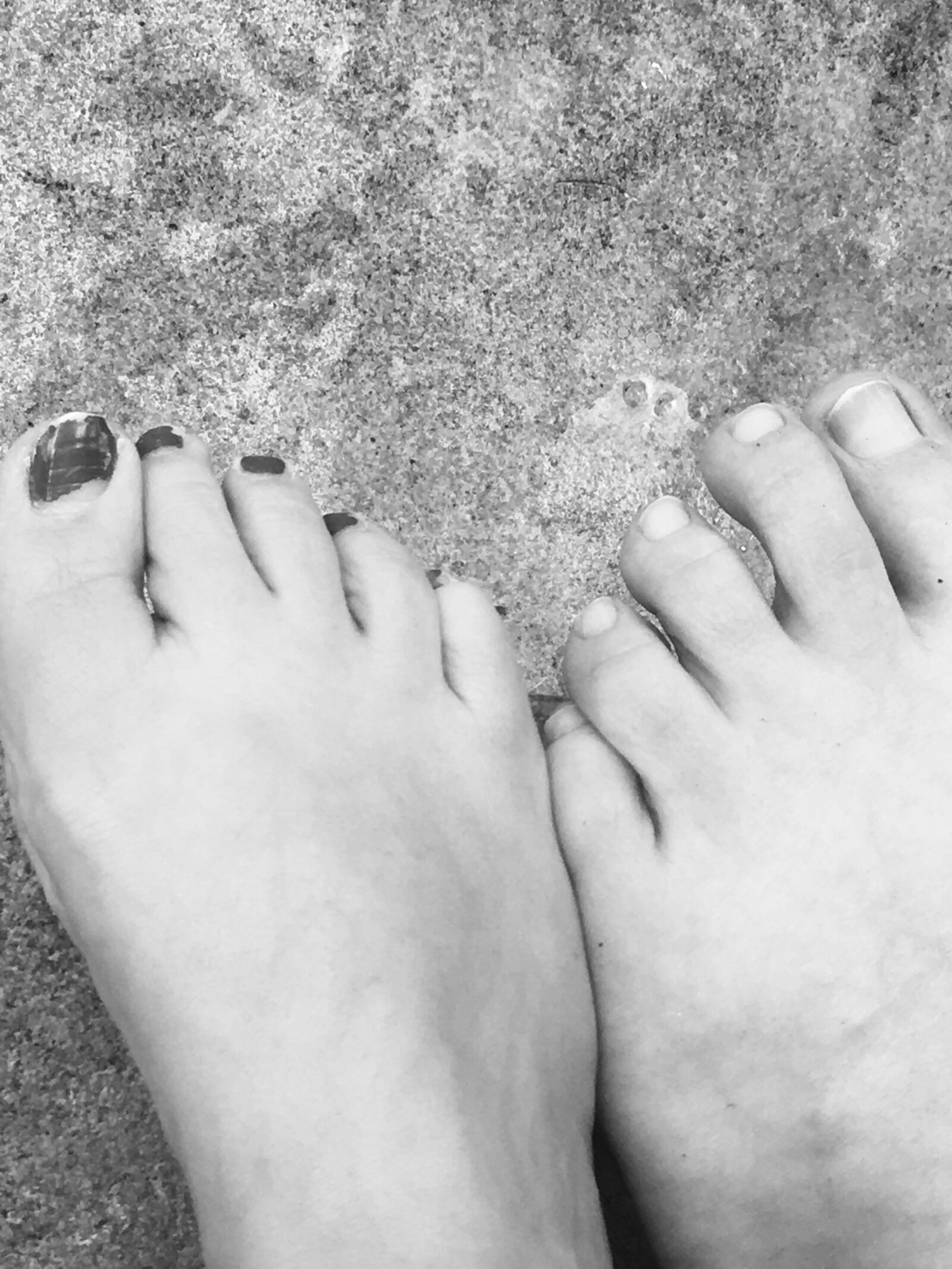Invokana Amputation
"While the shoe fits for Invokana in managing type 2 diabetes, it walks a tightrope with amputation risks. This article navigates the link between Invokana and amputations, shedding light on prevalent types, contributing risk factors and key findings from clinical studies. We aim to provide essential information, empowering patients and healthcare providers to make informed decisions about Invokana usage, whilst exploring safer alternatives and future developments."

Key Takeaways
- Invokana has been associated with toe, middle-of-the-foot, leg amputations occurring below and above the knee.
- Risk factors for Invokana amputations include a history of prior amputation, peripheral vascular disease, neuropathy, and diabetic foot ulcers.
- Clinical trials have shown significantly higher amputation rates in participants taking canagliflozin, the active ingredient in Invokana.
- Both diabetes and Invokana use can lead to amputation due to poor blood circulation to the legs and feet.
Understanding Invokana: A Brief Overview
To foster a comprehensive understanding of the drug Invokana, it's crucial to delve into its pharmacological characteristics, uses, and potential side effects, particularly focusing on the risk of amputations. Invokana, known generically as canagliflozin, is a medication prescribed for managing type 2 diabetes. It works by inhibiting the reabsorption of glucose in the kidneys, promoting its excretion through urine. However, while effective in controlling blood sugar levels, Invokana has been associated with a higher risk of amputations. Understanding Invokana: Mechanism and Side Effects, it is essential to note that the drug can lead to decreased blood circulation, particularly in the lower limbs, thereby increasing the risk of foot and leg amputations. Hence, careful evaluation of the Potential Complications of Invokana Use is crucial.
The Link Between Invokana and Amputations
Invokana, a widely prescribed medication for type 2 diabetes, has drawn significant attention and concern due to its potential link with increased risks of leg and foot amputations. Research has indicated a higher rate of such amputations among Invokana users compared to other diabetes medications. This alarming correlation necessitates early detection and appropriate prevention strategies. Medical professionals stress the importance of regular foot exams and immediate attention to ulcers or infections for early detection. Simultaneously, prevention strategies could include rigorous blood sugar control, proper foot care, and regular physical activity. While the exact cause of this link remains unclear, understanding it is crucial for healthcare providers and patients to make informed decisions about diabetes management.
Most Prevalent Types of Amputations Linked to Invokana
Among the range of severe side effects associated with Invokana, certain types of amputations emerge as the most prevalent, with toe and middle-of-the-foot amputations being the most commonly reported. The prevalence of Invokana amputations is a grave concern, as these amputations are not only physically debilitating but also have profound long-term effects on a patient's quality of life. Another type of amputation linked to Invokana is the below-knee and above-knee amputations. The long-term effects of Invokana amputations extend beyond the immediate physical loss. They may include chronic pain, mobility issues, and psychological trauma such as depression and anxiety. Therefore, understanding the types and prevalence of these amputations aids in making informed decisions about Invokana use.
Risk Factors That Contribute to Invokana Amputations
In the landscape of Invokana-related complications, several risk factors stand out, such as prior amputations or vascular disease, which can significantly increase the likelihood of subsequent amputations. Additionally, nerve damage conditions, such as neuropathy, and open sores or wounds like diabetic foot ulcers also enhance the risk. These conditions can have long term effects, making preventive measures crucial. Patients should be proactive about their health, informing their doctors about these conditions before starting Invokana. Regular foot care, proper nutrition, and maintaining blood sugar levels can serve as preventive measures. Despite these, the possibility of amputation exists. Hence, it's essential to understand these risk factors and their long-term effects to make informed decisions about Invokana use.
Key Findings From Invokana Amputation Studies
The synthesis of data from extensive clinical research has unveiled a concerning correlation between Invokana use and an elevated risk of amputation, elucidating a critical need for rigorous patient monitoring and informed decision-making. Specifically, studies have shown marked increases in amputation rates among Invokana users compared to those on a placebo. This discovery underscores the importance of early intervention and vigilant monitoring of Invokana patients to mitigate the potential risks. Furthermore, patient advocacy is crucial in this context. Patients must be adequately informed about these risks to make informed health decisions. Moreover, healthcare providers should employ a proactive approach, with a keen focus on early signs of complications that could lead to amputations, ensuring patients receive the necessary care promptly.
Invokana’s Role in Increasing Amputation Rates
Over the past decade, Invokana's role in escalating amputation rates has become increasingly prominent, drawing scrutiny from medical professionals and patients alike. The drug's impact on patient awareness has been considerable. Patients are now more alert to the potential risks associated with Invokana, including the heightened possibility for amputations. On the other hand, the role of pharmaceutical companies in Invokana amputations has also come into question. Critics argue that these corporations may not have done enough to warn consumers about the associated risks. Despite the drug's benefits in controlling blood glucose levels, the alarming correlation with increased amputation rates has sparked significant concerns, necessitating further investigation and proactive measures to ensure patient safety.
Comparing Diabetic Amputations and Invokana Amputations
Analyzing the differences between diabetic amputations and Invokana amputations reveals significant disparities, but it also underlines some disturbing similarities. Comparing risk factors for diabetic and Invokana amputations, both conditions share a commonality in poor circulation. Diabetic amputations often stem from uncontrolled blood sugar levels leading to nerve damage and subsequent ulcers, while Invokana amputations may start with dehydration, causing foot ulcers. The long term consequences of Invokana amputations can parallel those of diabetic amputations, including mobility limitations, the need for prosthetics, and potential psychological distress. Despite these shared characteristics, Invokana's associated amputation risk is a disconcerting revelation, prompting a deeper examination into the safety and viability of Invokana as a treatment option.
Case Studies: Personal Experiences With Invokana Amputation
Several compelling case studies offer firsthand accounts of individuals who have undergone amputation as a result of Invokana use. These invokana amputation case studies highlight the experienced physical and emotional hardships. One patient, a former marathon runner, had to get a lower-leg amputation after developing a severe foot ulcer while on Invokana. Another case involved a woman who suffered toe amputations, drastically impacting her mobility and independence. These personal experiences underscore the severe consequences that can arise from Invokana use, emphasizing the importance of patient awareness about the potential risks. They also stress the need for ongoing medical monitoring and timely intervention to avoid such drastic outcomes. Each story is a solemn reminder of the potential life-altering effects of Invokana-related amputations.
How to Recognize Early Signs of Invokana Amputation
Amid the potential risks associated with Invokana use, recognizing the early signs of Invokana-induced amputation is of paramount importance for patients and healthcare providers alike. Recognizing symptoms such as persistent pain, tenderness, or sores on the feet and legs, particularly in toe and mid-foot regions, can be the first step towards early intervention. Peripheral vascular disease and neuropathy, which lead to numbness and reduced blood flow, are also significant signs pointing to a potential amputation risk. Alongside recognizing symptoms, prevention measures including regular foot examination, maintaining proper foot hygiene, and managing blood sugar levels can significantly reduce the risk of amputation. Patients should immediately report any unusual changes in their feet or legs to healthcare providers for timely management.
Legal Aspects: Lawsuits and Claims Related to Invokana Amputation
Diving into the realm of legalities related to Invokana Amputation, we encounter a myriad of lawsuits and claims, initiated by patients who, after using Invokana, suffered severe complications leading to amputations. These invokana amputation lawsuits underscore the gravity of the situation, with plaintiffs alleging that Invokana's manufacturer failed to warn about the risk of amputations. Many patients are now seeking compensation for invokana amputations, asserting that they've suffered physical and emotional distress, lost wages, and medical expenses due to the drug's adverse effects. These legal battles highlight the importance of pharmaceutical companies being transparent about potential side effects to ensure patient safety and trust in the medications prescribed to them.
How Doctors Are Responding to Invokana Amputation Risks
The medical community is actively responding to the risks associated with Invokana, with a primary focus on mitigating the amputation risks associated with this medication. Doctors are now more cautious in prescribing Invokana, especially to patients with pre-existing risk factors such as peripheral vascular disease or a history of amputations. Rigorous patient monitoring and regular foot examinations have also been integrated into treatment protocols. This medical community response is crucial in maintaining patient trust and ensuring their safety. Despite the effectiveness of Invokana in controlling blood sugar levels, the potential risk of amputation has cast a shadow of doubt. Therefore, transparent communication about these risks and alternative medications is paramount to preserving the doctor-patient relationship and trust.
Precautionary Measures to Avoid Invokana Amputation
Patients using Invokana must remain vigilant about their health, and regular check-ups with their healthcare provider are crucial to detect early signs of complications that could lead to amputation. Recognizing symptoms like foot ulcers, numbness, or pain in the limbs is key. These may indicate peripheral vascular disease or neuropathy, both risk factors for amputation. Preventive measures include maintaining a healthy lifestyle with balanced diet and exercise to manage diabetes. Patients should inspect their feet daily for any signs of injury, as early detection and treatment can prevent worsening of the condition. Quitting smoking can also improve blood flow to the extremities. It is important to inform the doctor of any health condition before starting any medication, including Invokana.
Life After Invokana Amputation: Coping Strategies
Undeniably, coping with life after an Invokana amputation presents both physical and emotional challenges, requiring effective strategies for adaptation and recovery. Coping strategies may include psychological support, such as counseling, to address emotional trauma and stress. It's vital to establish a support network of family, friends, and fellow amputees for shared experiences and guidance. Physical recovery involves rehabilitation methods, focusing on improving mobility and independence. This may include physiotherapy to strengthen the body and occupational therapy to adjust to new ways of performing daily tasks. Additionally, prosthetic training can be beneficial for those suitable. It's crucial to remember that each person's journey is unique, and adapting to life post-amputation is a gradual process that requires patience, resilience, and determination.
Alternatives to Invokana: Safer Options for Patients
Given the serious risks associated with Invokana, including the potential for amputation, it's imperative to consider safer alternatives for managing diabetes, such as lifestyle modifications, other medications, and insulin therapy. Lifestyle changes, such as diet adjustments and increased physical activity, can have a profound impact on blood sugar levels. Medications like Metformin or insulin therapy can also manage diabetes effectively with a lower risk profile. DPP-4 inhibitors and GLP-1 receptor agonists are also safer alternatives. A critical component of choosing a safer option is patient education. A comprehensive understanding of the risks and benefits associated with each treatment option allows for informed decision-making. Consultation with healthcare providers is essential in this process.
The Future: Research and Developments in Invokana Amputation
As we look to the future, medical research and technological advancements hold the potential to both reduce the risk of Invokana-related amputations and improve outcomes for those affected, yet the journey to such innovations is complex and multifaceted. Research advancements are pushing boundaries to find safer alternatives or modifications to Invokana that retain its benefits but eliminate the amputation risk. Simultaneously, preventive measures, such as early diagnosis of risk factors and timely intervention, are gaining importance. Technological advancements may also bring forth tools for better patient monitoring, thereby catching potential complications early. These combined efforts of research and technology are expected to revolutionize the future of Invokana use, aiming to make it safer while remaining effective.
Frequently Asked Questions
How Long Does It Typically Take for Symptoms Leading to Invokana Amputations to Manifest?
The timeline for symptom manifestation leading to amputations can vary significantly between patients. It often depends on individual health factors such as pre-existing conditions and the severity of their diabetes. Some patients report the onset of symptoms within a few months of starting Invokana, while others may not experience symptoms for several years. Alternatives to Invokana are available and patients' experiences suggest that it is beneficial to explore these options with their healthcare provider.
Are There Any Specific Demographic Groups That Are More Susceptible to Invokana Amputations?
The susceptibility to amputations can vary across different demographic groups based on various factors. A demographic analysis can provide insights into patterns and trends, aiding in amputation prevention strategies. However, specific data linking certain demographic groups to higher Invokana-related amputation rates is currently limited. It's crucial to note that all patients taking Invokana, regardless of demographics, should be aware of potential risks and discuss them with their healthcare provider.
What Is the Treatment Process Like for Invokana-Induced Foot Ulcers?
Treatment for foot ulcers entails a comprehensive approach, akin to a well-orchestrated symphony. It involves wound care, pressure relief, and infection control. Ulcer prevention strategies, such as regular foot checks and appropriate footwear, are crucial. Additionally, managing underlying conditions like diabetes is important. If Invokana, a diabetes medication, is the cause of ulcers, discussing Invokana alternatives with healthcare providers may be a beneficial step in both the treatment and prevention of further ulcer development.
Have There Been Any Reported Cases of Successful Reversals of Invokana-Related Amputations?
Reports of successful reversals of amputations, irrespective of the cause, are rare due to the irreversible nature of the procedure. Instead, the focus is often on prosthetic adaptation to enhance mobility and quality of life. Additionally, patients may seek legal recourse if they believe the amputation was due to a specific drug such as Invokana, especially if they were not adequately warned about the risks.
Are There Any Lifestyle Changes That Can Reduce the Risk of Invokana Amputations Further Than Just Switching Medications?
To reduce the risk of serious complications, lifestyle changes are recommended alongside considering Invokana alternatives. Preventative measures could include regular exercise, maintaining a healthy diet, and routine foot care. Regular check-ups with a healthcare professional are also crucial to monitor any potential issues. However, it's important to consult with a healthcare provider before making any changes to medication or lifestyle habits, to ensure they are safe and suitable for individual health circumstances.
Conclusion
The correlation between Invokana and increased risk of amputations, particularly in the lower limbs, is a significant concern. The CANVAS and CANVAS-R trials affirmed this, revealing higher amputation rates among Invokana users. However, it is noteworthy that risk factors like previous amputations, vascular disease, neuropathy, and foot ulcers also play a role. Therefore, while caution is necessary, personalized medical advice remains paramount in making informed decisions about Invokana use.

This post has been generated by AI and was not reviewed by editors. This is Not legal advice. Please consult with an attorney.




